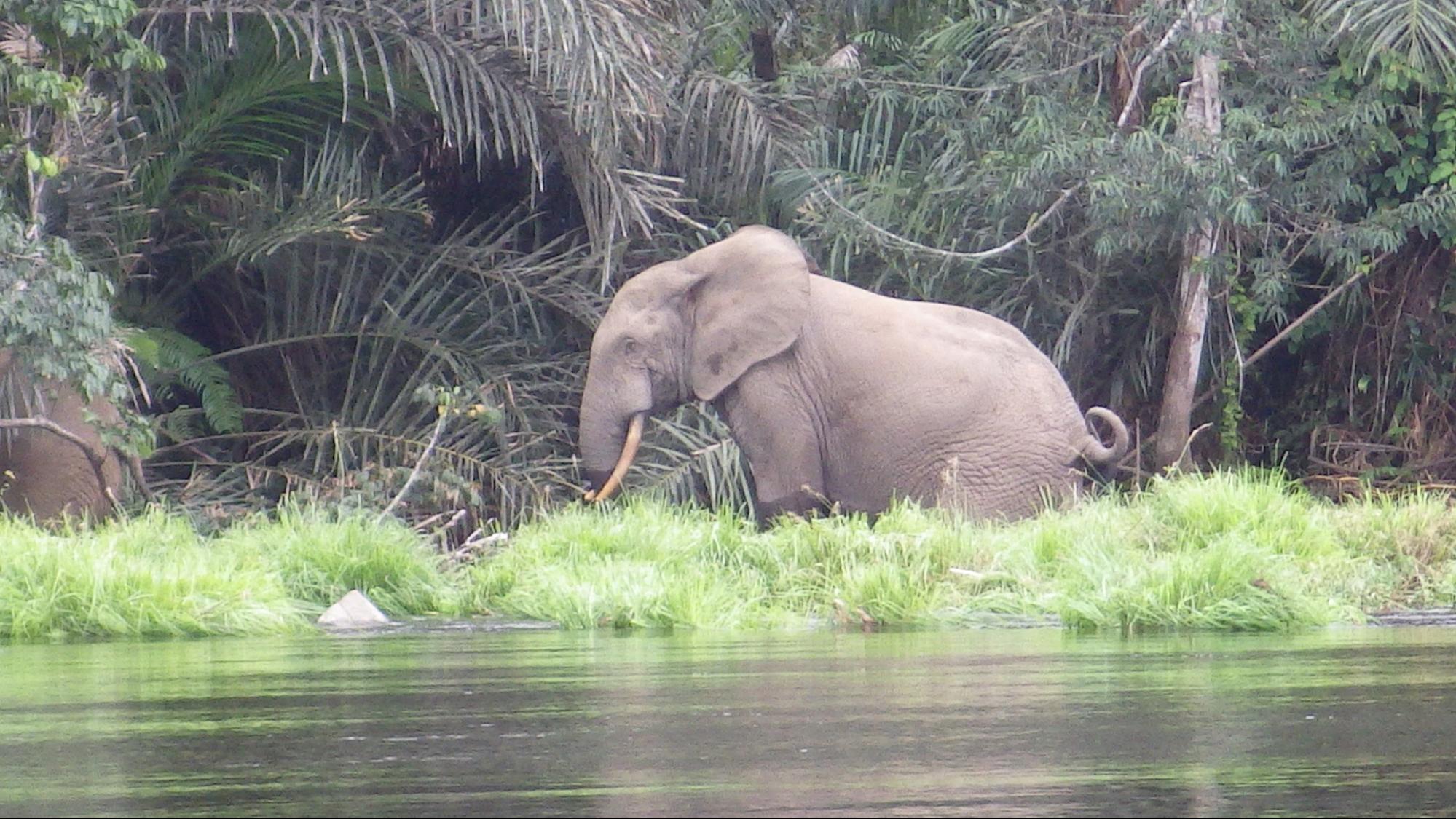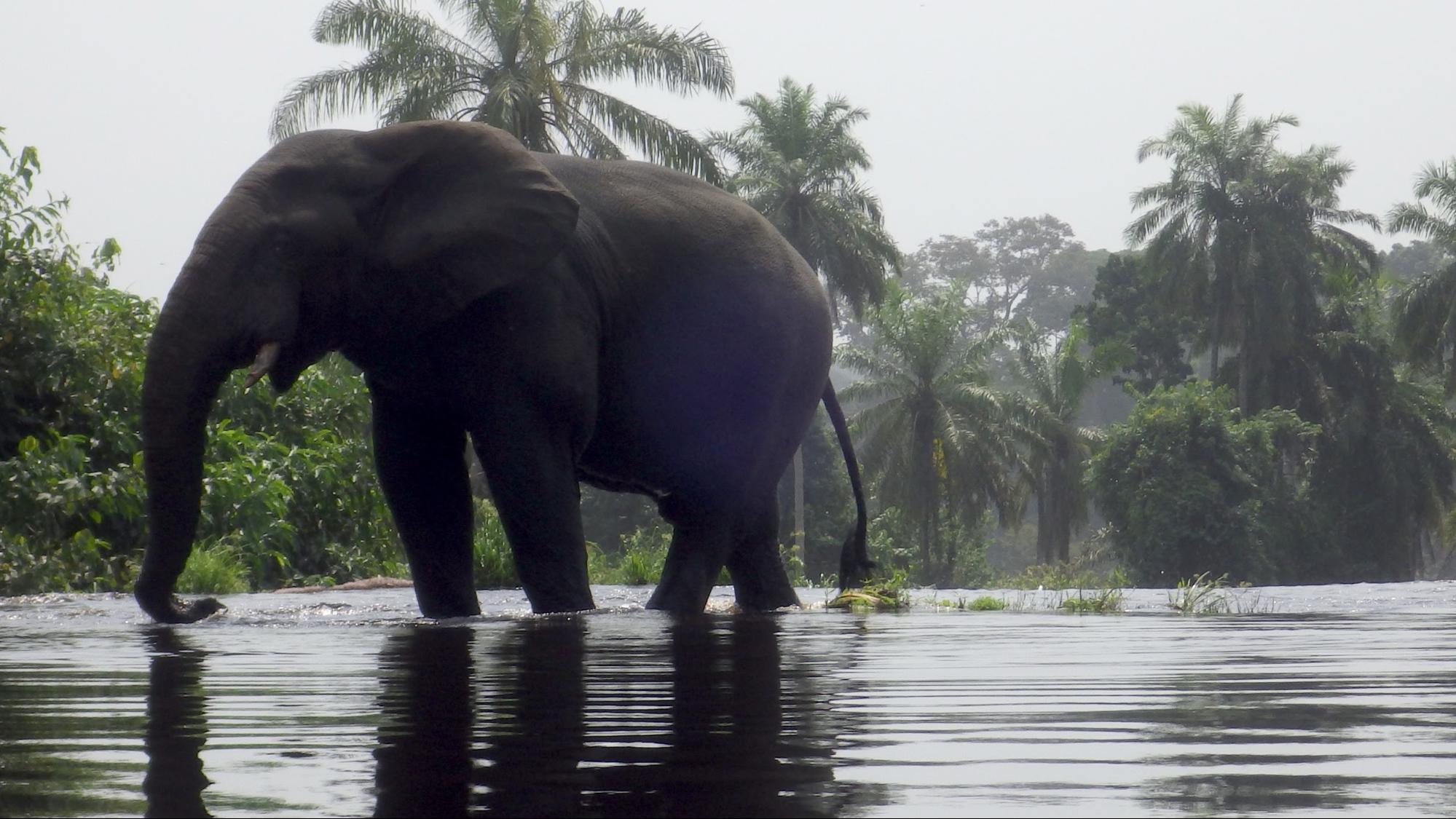I was always dimly aware of elephant poaching for ivory, but it didn't alarm me until I spent a year working as a tropical ecology research assistant in central Africa. I was in Gabon, a heavily forested small country in the heart of the Congo basin on Africa's west coast.
Gabon is home to roughly half (about 50,000) of Africa's forest elephants. Although Gabon has been called “the last stand†for forest elephants, this surviving population has fallen by two-thirds since 2004 and continues to decline. In Gabon's Minkébé National Park alone, poachers have killed 15,000 out of 22,000 elephants in the last decade. Other central African countries such as Cameroon, Central African Republic, and the Democratic Republic of Congo have seen even more devastating losses of elephants due to poaching. In the last ten years, the overall population of forest elephants dropped by 62%.

Forest elephants have straight, pinkish tusks which are prized as superior ivory over the curved white tusks of savannah elephants. The primary market for ivory is driven by the growing middle class in China, where carved trinkets are considered a good investment. It can be difficult or impossible for the consumer to distinguish legal ivory (acquired before 1989) versus more recent smuggled products from illegally poached elephants.
In recent years, poaching has become a part of international organized crime. Eco-guards rounding up poachers in Gabon have observed that their enemies come equipped with satellite phones, GPS units, and Kalashnikov (AK-47) assault rifles. In Central Africa, terrorist groups such as Boko Haram poach to get money for weapons. A small team of only 50 unarmed Ecoguards protect Minkébé National Park, which is the size of Belgium. The penalty for poaching in Gabon is a fine of 80,000 francs (about $160) and a maximum of six months in prison. With so few consequences, briefly imprisoned poachers easily return to hunting elephants.
Although the situation in Gabon and its neighboring central African countries is grim, prospects for the savannah elephants of southern Africa are worse. Tanzania reported a loss of 60% of its elephants in the last five years; Mozambique lost 48% in the same time period. Currently, the hardest-hit region is southwestern Zambia, where elephant populations have dropped 95%.
The catastrophic loss of African elephant populations has sparked several creative solutions from conservationists fighting to curb the species' decline. One remarkably effective solution has been training and deploying ivory-sniffing dogs. The African Wildlife Foundation has placed several of these dogs at key ports in Kenya and Tanzania. The dogs, which are trained to sit or lie down if they smell ivory, rhinoceros horn, or gun powder, can search a truck in three to four minutes – a job which would take park rangers hours. One ivory-sniffing dog named Ruger, trained by the organization Working Dogs for Conservation, has already stopped 150 poachers attempting to smuggle contraband out of Zambia.
Drones, or unmanned aerial vehicles (UAVs), are another innovative use of technology in the war against poaching. A company named Air Shepherd has launched drones in South Africa which carry cameras, GPS receivers, and have infrared sensing devices. Most big game hunting happens at nighttime, a difficult time for rangers to spot poachers. Drones, however, can detect both poachers and wildlife via infrared and thermosensors.They send images and locations of large heat signatures to a computer at the ranger base. An operator can then alert rangers on the ground if any poachers have entered the park. After a one-year trial period using drones in Hluhluwe-iMfolozi Park, the Air Shepherd project saw a 65% drop in rhino poaching. Drones have since been deployed to Zimbabwe, Zambia, Kenya, Tanzania, and Namibia.
Researchers have also found innovative ways to track poaching activity. National Geographic recently published an article detailing the efforts of one man, Bryan Christy, to track the movement of illegally obtained ivory. Christy had a colleague create false elephant tusks implanted with GPS chips powered by batteries that last over a year. He planted the artificial tusks in the black market in the Central African Republic and watched as, over the next 53 days, they traveled north through South Sudan and into Sudan. The tusks had followed a route used by the Lord's Resistance Army (LRA), a central African terrorist rebel group which is known to get money by trafficking ivory.
In a different approach to tracking, Dr. Samuel Wasser of the University of Washington and his team used genetic tools to figure out where elephant poaching was heaviest. Wasser established a method to extract DNA from tusks. These DNA samples act as “fingerprints†to identify an elephant from a particular population. By comparing DNA samples of confiscated ivory to dung samples from various wild populations in Africa, Wasser's team could match ivory to a rough location where the elephant had lived. They found that all poached ivory in recent years comes from two locations: a stretch of land spanning parts of Mozambique and Tanzania, and a second area comprised of the Central African Republic, Republic of the Congo, and – you guessed it – Gabon.
The poaching situation in Central and East Africa is grim. Without intervention, elephants face extinction within mere decades. However, people are fighting back – armed with advanced technological methods to outsmart the poachers. That gives me hope.

About the Author:
 Ruby Harrison is a Ph.D. graduate student in the Department of Entomology at the University of Georgia. Ruby studies endocrinology and reproduction of the yellow fever mosquito, Aedes aegypti – the same species that spreads Zika virus. In her free time she enjoys backpacking, camping, swing dancing, and cooking dumplings. Contact her at reh21923@uga.edu.More from Ruby Harrison. Ruby Harrison is a Ph.D. graduate student in the Department of Entomology at the University of Georgia. Ruby studies endocrinology and reproduction of the yellow fever mosquito, Aedes aegypti – the same species that spreads Zika virus. In her free time she enjoys backpacking, camping, swing dancing, and cooking dumplings. Contact her at reh21923@uga.edu.More from Ruby Harrison. |
About the Author
- athenssciencecafehttps://athensscienceobserver.com/author/athenssciencecafe/April 17, 2020
- athenssciencecafehttps://athensscienceobserver.com/author/athenssciencecafe/April 12, 2020
- athenssciencecafehttps://athensscienceobserver.com/author/athenssciencecafe/April 3, 2020
- athenssciencecafehttps://athensscienceobserver.com/author/athenssciencecafe/March 30, 2020







